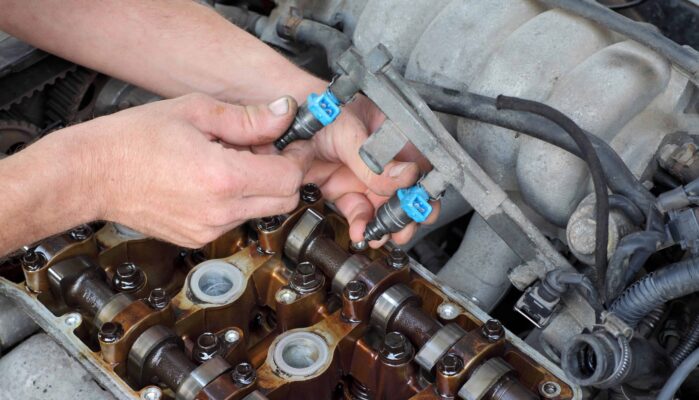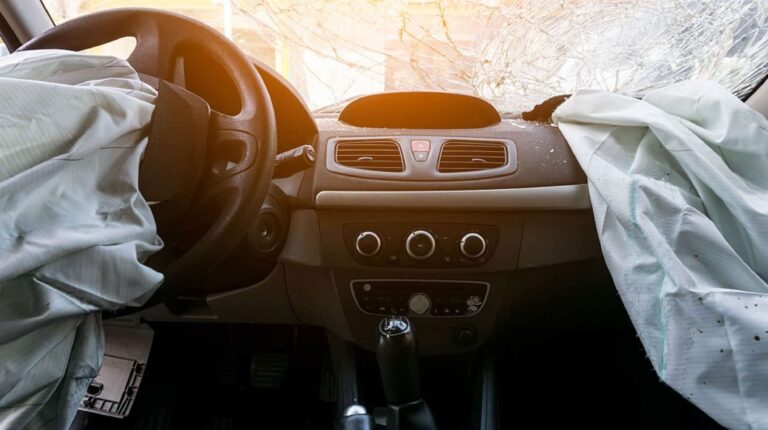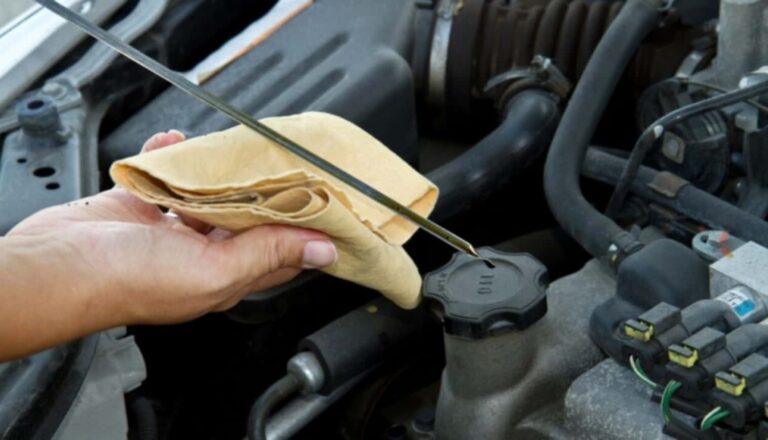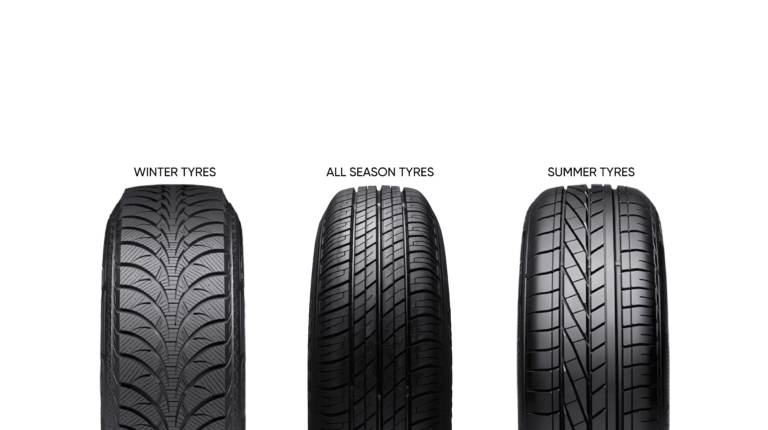![How To Change A Flat Tire [A Detailed Guide]](https://carorbis.com/wp-content/uploads/2021/09/How-to-Change-a-Flat-Tyre-Know-About-Run-Flat-Tyres.png)
After living under the rock for months, thanks to the lockdown, everyone wants to just pick up the keys, fill the tank to the brim and make those saved images on Instagram turned into a reality. But we always say it and let me remind you again, Indian roads are far away from being perfect. From beaten paths to no roads, even the journey becomes a task. To drive in India, you need to have skills and changing a flat tyre is one of those. Still, many of you have done it but if you want to road trip like a pro, you should learn how to change a flat tyre! So grab that wrench and read on.
How to Change a Flat Tyre?
Before running to the cure, we should know what causes a flat tyre and how can you prevent getting your tyres flat or, in simpler terms, punctured. Any sharp object coming in direct contact with your car’s tyre is the main culprit for a puncture. Other causes include overinflated tyres, small leaks, cracked alloy and a lot more.
What Causes a Flat tyre? Precautions You Should Take
There are multiple reasons that lead to a flat tyre and you can’t avoid it really. But there are some general precautions you should take before embarking on a road trip.
1: Drive slow over bad patches –
In India, roads take no time to become lakes, deserts or an offroad track, so always slow down over rough patches. Poor roads are prone to have sharp stones, metal pieces and nails etc that can cause a tyre leak and in minutes, your tyre will become flat.
2: Keep your tyres inflated properly –
Before you go full-blown on the throttle, always keep your tyres inflated with the correct PSI rating. Overinflated tyres could heat up and burst over high speeds, in case of high ambient temperature. Before going on freeways, check the tyres and inflate them with recommended PSI rating, or one or two-unit below that.
3: Keep a check on your car’s alloys –
Our car’s tyres take a tough beating on the Indian roads. Hitting sharp bumps not only bulges out your tyre but can also crack the alloy wheel. Hence, if you are noticing air leaks more often, it’s recommended to check if your alloy is cracked and get it fixed.
Steps to Change a Flat Tyre
Before starting, you must have all the essentials this procedure needs. Those are a jack, a spare wheel, a lug wrench, and an emergency triangle. Carmakers offer all these tools with the car that is usually placed under the boot. The mounting of the spare wheel depends on the kind of vehicle you have. It could be under the boot or under the rear end of the vehicle. Now you have access to all the needful stuff, it’s time to get your hands dirty. Well, you can use gloves if you don’t want that.
1: Pull off the road safely –
As you are now aware of the flat tyre, don’t panic or stop the car in the middle of the road. It’s true that you are not supposed to drive a car with a flat tyre, but pulling off the road safely is the first priority. Moreover, don’t park your car ahead of a blinding turn as that could be dangerous. Park your car in an open space, preferably on a flat concrete road.
2: Put wheel wedges and the emergency triangle –
Wheel wedges are used to stop the vehicle from rolling forward or backwards. However, a brick or a large stone is replaceable with wheel wedges to prevent the car from rolling. Emergency triangle is very crucial at night time, however, emergency lights would work in the daytime or in an empty space. Also, pull up the parking brake and engage any gear for a streamlined process.
3: Loosen up the lug nuts –
Before fitting the jack, the first job is to loosen up the lug nuts. The wheel nuts are exposed to the environment including heat and rain, hence they could build up rust. Loosening up the lug nuts could be tough as they tend to tighten up or stuck with time. Rotate the lug wrench clockwise to undo the lug nuts. You can also use your body weight to lose them but don’t unscrew them completely yet.
4: Place the jack on marked points –
Most cars offer reinforced points, especially for jack operation. Every point is near the wheel and marked with a symbol. Put the jack near the punctuated wheel and start lifting the car smoothly. Make sure that there are no passengers in the car and the emergency brake is engaged. Make sure that the punctured tyre is about six inches off the ground for easy replacement.
5: Unscrew the lug nuts –
As you have now lifted the car, it is time to unscrew the lug nuts and take the punctured tyre off the car. Pull the tyre towards you by gripping it in either 9 3 or 12 6 positions. Once the wheel comes off, put it in the space of the spare wheel.
6: Take out the spare wheel –
In our common hatchbacks, the spare wheel is placed beneath the inside boot lid. In most cases, you have to undo a nut to take off the spare wheel that doesn’t require any tool. In the case of SUVs, you have to assemble the tool as per the owner’s manual. Once that is done, insert it in the inlet and rotate it anti-clockwise to take out the spare wheel.
7: Mount the spare wheel on the hub –
Mounting the spare wheel could need two people. One to align the wheel to the lug bolts and one to fit the lug nuts into the position. Once you have put the lug nuts, start tightening them with fingers till the time they need a wrench. Once that is done, drop down the car and use the lug wrench to tighten up the nuts completely. Ensure that all the lug nuts are in their place and have been tightened up equally.
8: Check the tyre pressure and get the punctured tyre fixed –
Once you are back on the road again, don’t go with the flow. Look out for a tyre repair shop and get the punctured tyre fixed. Also, check the tyre pressure of all the tyres again as spare tyres may have loosened up on air pressure all this while being stored. If a tyre cut had caused the puncture, get the tyre replaced by your nearest authorised tyre vendor. Driving without a spare wheel could be risky on unpredictable Indian roads.
What are Run Flat Tyres?
Run-flat tyres seem to be a solution and a perfect escape from flat tyres. But that’s only half of the story and they also have certain issues, that are more prominent for the Indian market. Run-flat tyres are similar to our regular tyres, with a support system that reinforces the sidewall. The reinforced sidewalls let you keep going, even after a puncture for certain kilometres. They are offered in two choices, self-supporting sidewall or central support ring. The former one has reinforced sidewalls that are attained with harder rubber whereas the latter one uses a rubber ring in the middle of the tyre diameter that keeps the tyre running even after a puncture.
That surely sounded like magic and a solution to all the problems right? But wait for the flip side. Run-flat tyres come at a price and are expensive to maintain. While you can get a normal tyre fixed with a simple puncture repair, in most cases, run-flat tyres couldn’t be fixed if punctured and demand an immediate replacement.
You may ask why? Well, the reinforced sidewalls couldn’t bear the load for long and may misplace the second time you fill the air in the tyre. One more downside of the run-flat tyres is comfort level. Rubber tyres work in conjunction with the suspension to absorb the bumps. However, as the run-flat tyres have reinforced sidewalls, the scope of compression decreases and that results in stiffer ride quality.
FAQ:
Q1. What is run flat tyre?
Ans. A Run-flat tyre comes with reinforced sidewalls that help you to keep going even after a puncture. They are expensive and generally couldn’t be repaired after a puncture.
Q2. What does flat tire sound like?
Ans. When a tyre goes flat, the contact patch with the road increases. Excessive tyre noise, even at low speeds, is the sign of a flat tyre. Other signs include vague steering feel and poor handling.
Q3. Can flat tire drive?
Ans. Normal rubber tyres are not drivable after a puncture. However, in the case of an emergency, you can drive the vehicle for a short distance at slow speeds.
Q4. When a flat tire can’t be fixed?
Ans. If your tyre has got a big cut, then it couldn’t be fixed and you have to go for a tyre change. Multiple punctures are also not cured and the tyre should be replaced
Q5. How to fix a completely flat tire?
Ans. You can use a puncture repair kit to fix a flat tyre. Use the reamer tool to enlarge the hole and insert the sticky rubber strips to fill the hole. A proper fix won’t let the air come out from the hole again.
Q6. Is flat tire covered under warranty?
Ans. No, flat tire/tyre isn’t covered under warranty. However, you can get a punctured/cut tyre replaced with a new one by paying a nominal amount for the rubber you have shredded over time of use.
If you found this blog informative, make sure to read more interesting pieces on the Carorbis Blog and also read Car Suspension – Working and Different Types Explained








